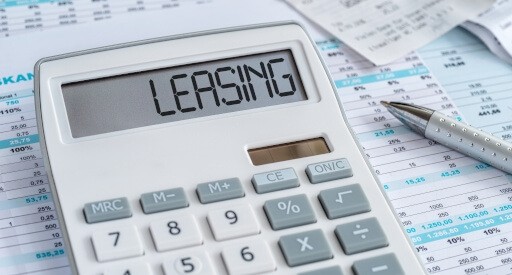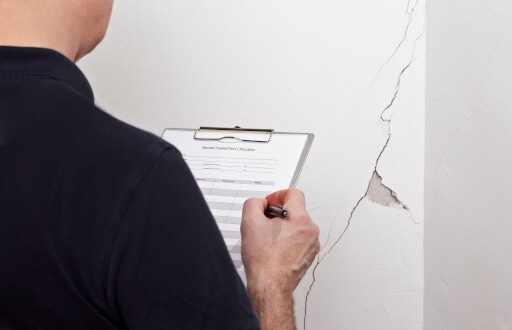
You’re almost ready to welcome a new tenant! You conducted a background check, signed the lease, and are now awaiting the new renter’s arrival. The tenant turnover process is almost complete, but the final piece of the puzzle is conducting the move-in/move-out inspection.
What Is a Move-In/Move-Out Inspection?
A move-in/move-out inspection is a walk-through landlords conduct to assess damage in a rental. Some landlords conduct these inspections habitually throughout a lease term. However, most landlords only inspect rental units twice: before and after a tenant moves in or out of the property.
If the tenant is moving into the property
You and your tenant should survey the property and document any pre-existing damage. Take pictures and thorough notes of any damage beyond normal wear and tear to ensure you don’t accidentally fault your tenant for damage that occurred before they moved in.
Once you complete move-in inspections, you can begin forming a good landlord-tenant relationship for the remainder of the lease term.
If the tenant is moving out of the property
When your tenant moves out, you should walk through the property and inspect each room for damage beyond normal wear and tear. This allows you to cross-reference the documented damage from the move-in inspection and determine which damage is new. After noting new damage, you can deduct the repair costs from the tenant’s security deposit and refund the rest.
Why Do I Need to Conduct a Move-In and Move-Out Inspection?
It is imperative to conduct move-in and move-out inspections so you can keep track of your property’s maintenance needs and properly refund security deposits. Conducting these inspections allows you to document the damage to your property and avoid disputes with your tenant about their security deposit refund.
What Should I Look for During a Rental Inspection?
When conducting a rental inspection, you should look for and document any damage beyond normal wear and tear and perform any routine maintenance.
Damage beyond normal wear and tear
It is unlawful to deduct charges from a security deposit for normal wear and tear like faded paint, dirty tile grout, and loose cabinet handles. Instead, look for damage, filth, or changes made to the apartment that you did not agree to. As you scan your rental, only note damage, filth, or changes that are excessive. The most common forms of damage to look for are:
- Unapproved renovations
- Rips, tears, or stains on the carpet
- Broken tiles, loose floorboards, or significant stains on the flooring
- Large holes in the walls
- Marks on the wall that require painting over
- Broken appliances, such as kitchen, bathroom, or light fixtures
- Cracked or broken windows
- Broken blinds
- Excessive trash
- Personal belongings the tenant has not removed
Routine maintenance needs
Landlords should also use the inspection to perform routine maintenance checks. While these checks shouldn’t affect your tenant’s security deposit refund, they can help you keep track of the property’s overall condition. While performing a move-in/move-out inspection, be sure to check:
- The HVAC system – Replace the HVAC filters and run the heat and the air to ensure the system functions properly.
- Plumbing – Check the pipes, faucets, and overall plumbing system for leaks.
- Mold or mildew buildup – Ensure your rental has no mold or mildew. If mold or mildew is present, clean all surfaces accordingly and cure the problem at the source.
- Evidence of pests or rodents – Take all the necessary actions to maintain pest control throughout the unit. Look for signs of pests or rodents and fumigate the property accordingly.
- Electrical wiring – Ensure all outlets and light switches function correctly.
How Do I Conduct a Move-In and Move-Out Inspection?
It’s essential to prepare for an inspection in advance. While an inspection is simply a walk-through, what you find during the inspection determines the costs for repairs and your tenant’s security deposit refund amount. To ensure you perform the inspection adequately, always follow the following steps.
Create a list
Before the inspection, create a move-in/move out checklist of items you plan to inspect throughout the property. A landlord checklist for tenant move-out will help keep you organized, give you a sense of direction throughout the inspection, and ensure you review the property fairly. Download our free printable rental move-in/move-out checklist for landlords to help you get started.
From excessive nail holes to undisposed trash, a move-in/move-out checklist should include all elements that may cause deductions from the security deposit. When a tenant moves in, you and the tenant should document any pre-existing damage to the property. When the tenant moves out, compare your move-out inspection checklist with the damage documented in the move-in checklist.
Schedule the inspection
While most move-in inspections occur the day the tenant arrives, move-out inspections can occur either on the tenant’s departure day or shortly after. To schedule your tenant’s inspection, research local laws to see the timeframe within which you can perform the inspection. Then, give your tenant written notice of the upcoming inspection. Include this notice in the lease agreement letter for tenants moving into the property. Include the notice in the lease termination letter for tenants moving out of the property. Once the tenant agrees to a date and time, you can move forward with the inspection.
Decide if the tenant will accompany you
There are pros and cons to inspecting with your tenant present. Before beginning, decide whether you would like your tenant to accompany you.
If the tenant is present during the inspection
You and your tenant can stay on the same page throughout the inspection. You can clearly explain the charges deducted from the security deposit, and the tenant can sign their agreement during the inspection. However, having a tenant present can be distracting, and it can be easy to forget to check certain parts of the property.
If the tenant is not present during the inspection
You will have the space to complete the inspection without distractions. However, this increases the chance a tenant may deny deductions for damage and accuse you of unfair charges.
Include your tenant in the move-in/move-out inspection process to avoid disputes about unfair charges. Assess the property individually if you want to inspect the unit without pressure.
Survey each room
It is essential to perform the inspection on an empty apartment. Surveying a vacant apartment ensures you can clearly see all areas that require repair. Before inspecting a property, instruct the tenant to remove all belongings beforehand. Then, begin the inspection by surveying each room individually. Once you approve one room, check it off your list before moving to another. Inspecting rooms one by one helps streamline the process and ensures you cover all areas of the rental. Once finished, compare your checklist to the tenant’s completed checklist and note any discrepancies in damage.
Offer a space for rebuttal
It is important to allow tenants a space for rebuttal. Once you document the damage, allow tenants to explain the reason for the damage or to fix the damage themselves. For example, if you report nail holes in the wall, the tenant may explain it as normal wear and tear. If you document stains in the carpet, the tenant may volunteer to clean the carpet themselves. Finally, if you document a cracked mirror, the tenant may point to where they recorded this preexisting damage on their move-in inspection checklist. Offering a space for rebuttal gives your tenant the chance to understand your charges or opt to fix any damage themselves before you charge their security deposit.
Document and calculate your deductions
Once you complete the inspection, document all damage found throughout the apartment. Then, calculate the cost to repair said damage. Remember, deducting fees from a security deposit for normal wear and tear is unlawful. As you calculate all fees, ensure the cost deducted reflects the cost of repairs. Once you finalize deductions, provide a copy of the inspection report and subsequent charges to the tenant.
Make Security Deposit Deductions Easy with Apartments.com
From cleaning stained carpets to stripping unapproved paint, it’s easy to lose track of your rental’s repair costs. So, what do you do when it’s time to return your tenant’s security deposit?
Luckily, Apartments.com has a great solution. Our expense tracking platform helps you summarize rental expenses by property and tax category. From there, you can easily export them to CSV or PDF formats to make doing your taxes a breeze. Track your expenses per property—and even upload receipts—without relying on complex spreadsheets or faulty memories. And when you're ready to present the deductions to your tenant, easily export your repair expenses in PDF format.
Calculating what to return from your tenant’s security deposit has never been easier. To conduct an effective move-in/move-out inspection and easily refund security deposits, trust Apartments.com.
This article was originally published on Sept. 30, 2020.
FAQs
Are rental inspections required?
While not required by law, rental inspections can help you and your tenant in the long run. Move-in and move-out inspections can help you keep track of the repairs and maintenance your property needs while protecting your tenant from paying for damage that occurred before they moved in.
Do I conduct a move-out inspection if the tenant renews their lease?
It’s a good idea to conduct a renewal inspection. Renewal inspections can help you keep track of your property’s condition and note any necessary repairs and routine maintenance. If tenants intend to renew, they do not have to remove their personal belongings during the inspection.
What are landlords responsible for in the move-out process?
Landlords are responsible for inspecting their rental property for excessive damage, filth, and unauthorized renovations. Afterward, landlords must refund the tenant’s security deposit minus the cost of any necessary repairs.
How much notice does a landlord have to give to vacate a tenant?
While the amount of notice landlords are required to provide varies by state, most states require at least 30 days’ notice with a lease termination letter. This letter serves as notice to vacate the property following the end of the tenant’s lease. Check your state laws for the regulations around rental notices.











